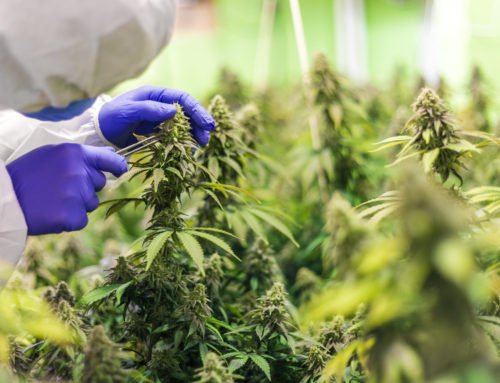It’s 11 am on a Tuesday, and you just got word from one of your greenhouse managers that several batches of romaine have tested positive for E. coli. What do you do? Likely, you panic.
The clock is ticking as you scramble to answer questions. How many batches are contaminated? How many of those batches are still at your facility? How many batches are on their way to retailers or already in the hands of customers? What’s the source of the contamination? How many of your crops are vulnerable to cross-contamination? When was the last clean test conducted in the contaminated zone? Who conducted the test? Who reported it? What testing needs to be carried out to check the health of the rest of your crops? How much time and money will that cost your operations? What are the first steps you need to take to recall any of your tainted products?
It’s a reality far too many farmers face.
No matter how tight your production or streamlined your operations may be, every produce farm is vulnerable to food safety incidents — especially indoor farms. A controlled environment does not automatically eliminate climate changes, pest infestations, and contamination. In fact, according to food safety veteran consultant Sarah Taber, “if you mess up indoors, everything is magnified.”
“As a consultant, a lot of my time is spent grief counseling people over the loss of the innocence they had when they thought that food safety wasn’t a problem [indoors]. When you’re outside you have air circulation and sunlight that can brush back some of your mistakes. Temperature and humidity can get out of control indoors in a way it can’t outdoors and that can grow bacteria.”
Too many growers don’t have Standard Operating Procedures in place for even the most recognized audits to come out of the Global Food Safety Initiative (GFSI) — GAP, HACCP and SQF among them. That’s a problem. Not only because it put customers and consumers at risk, but it also endangers their businesses.
As a whole, the agricultural supply chain remains extremely vulnerable today. Growers no longer produce food on a local scale; internal imports aside, American produce travels on average nearly 1,500 miles from farm to table. The logistics of that kind of transport means that if and when a food safety concern emerges, the network of consumers and retailers put at risk is a wide one. Just look at the recent papaya salmonella outbreak. The CDC has traced back to a New York distributor, but not before people had fallen in eight states. In the last six years alone, food recalls across the U.S. have grown by 10%.
Experts across the globe have recognized the threat, and are making efforts to strengthen the most vulnerable links in the agricultural supply chain starting with prevention. Sure, the U.S. FDA steps in to manage widespread, hazardous recalls but they’re only able to work at minimizing the aftermath of an outbreak. Every grower knows the key to limiting the impact of a food safety threat once it has revealed itself is to implement damage control solutions as quickly as possible, but that’s not the first step.
This year saw the first-ever World Food Safety Day, courtesy of efforts made by the United Nations to raise awareness about the millions of illnesses and hundreds of thousands of death that occur each year in relation to unsafe food. But, how many of them can really be prevented?
From a producer standpoint, if you don’t implement SOPs that help you meet regulatory compliance standards, maintain impeccable records of that traceable data, ensure accountability for tasks that ensure plant health and sanitary work conditions, and educate your team on recall plans in case of incident you put your entire business at risk.
The aftermath of a poorly managed food safety incident is complicated and difficult — if not impossible — to overcome. What’s really at stake is not just profit and public health. It’s your farm’s reputation, it’s your business. Tainted food leaves a tainted flavor on the preferential palette of the general public. That kind of trust is hard to earn back. Not to mention, a high number of retailers require audits before they partner with producers. When auditors and regulators come knocking at the door, you want to be ready.
The net? Farm food safety traceability should be digitized in the 21st century. Food safety failures are expensive and wasteful as they are dangerous. If you’re not helping your farm, you’re hurting your farm. Preventative measures don’t just protect growers and their farms from liability, they ward off worst-case scenarios. Preparedness isn’t a luxury, it’s insurance.
When you save time, you save money. A recall plan will help you preserve both critical resources. But time and money aren’t everything. Labor is another resource you have to take into consideration. If you got the call right this minute, would you have the manpower to carry out a recall? Would you have enough hands to perform routine tasks and run damage control? Could you pay them all?
Internally, you have to worry about the allocation of resources. Externally, you have to worry about your responsibility to the rest of the supply chain. The earlier you can warn your retailers and your customers, the better. Speed will not only protect customers from getting sick, it will also preserve your farm’s reputation among them.
Recalls, audits, and food safety incidents are a reality for farmers. The absolute worst thing you can do is sit back and hope it doesn’t happen to you. Take precautions to establish a responsible, reliable approach to food safety.






Leave A Comment